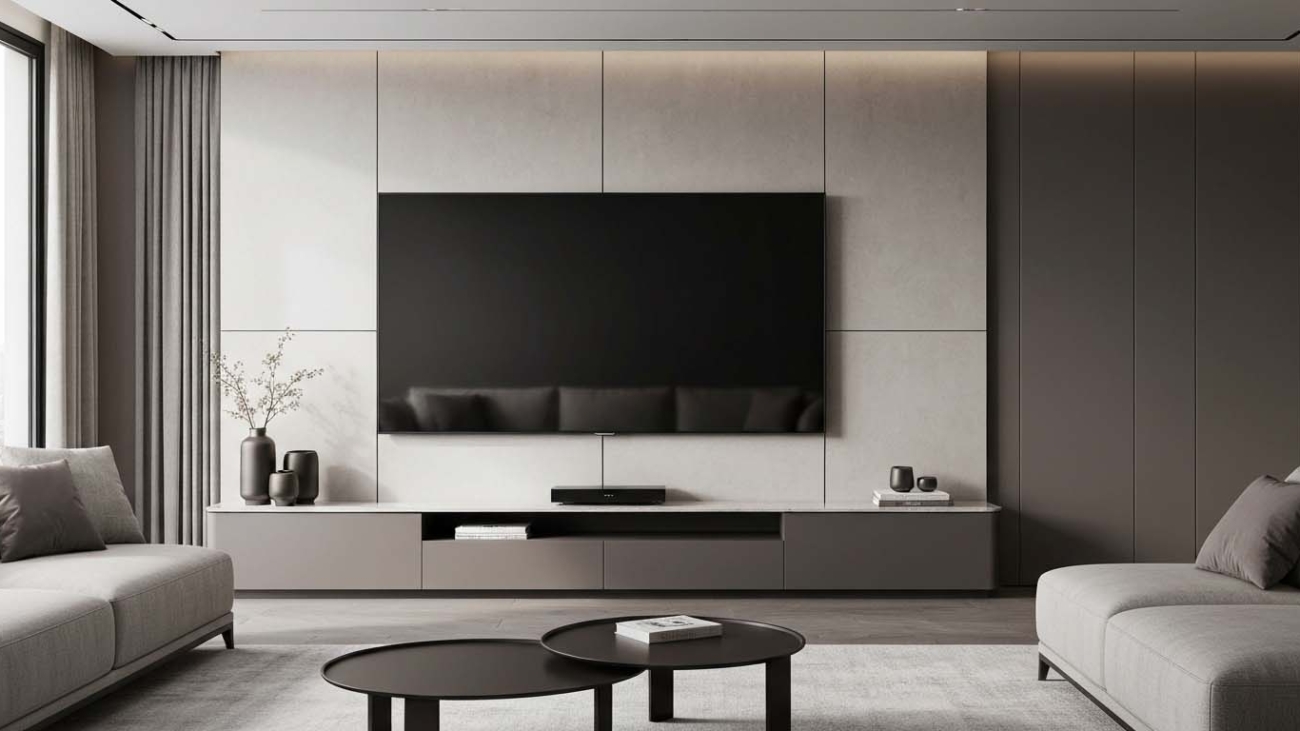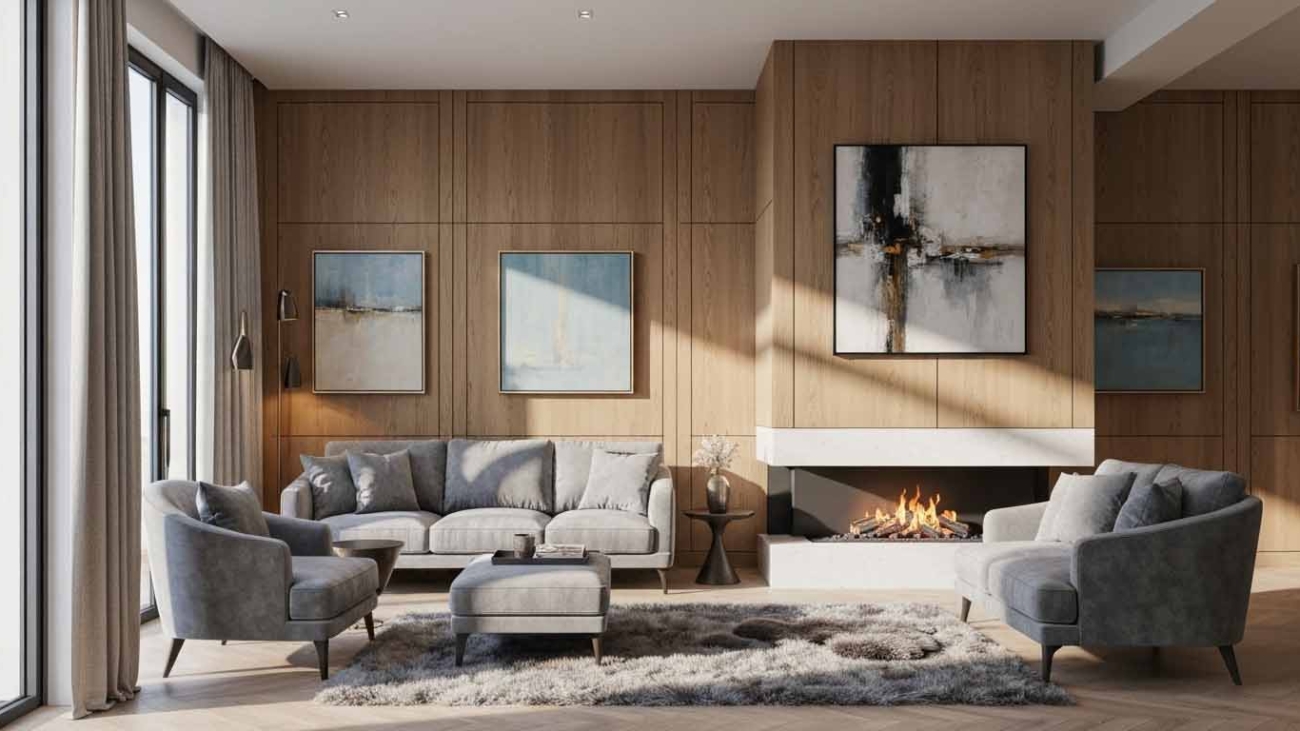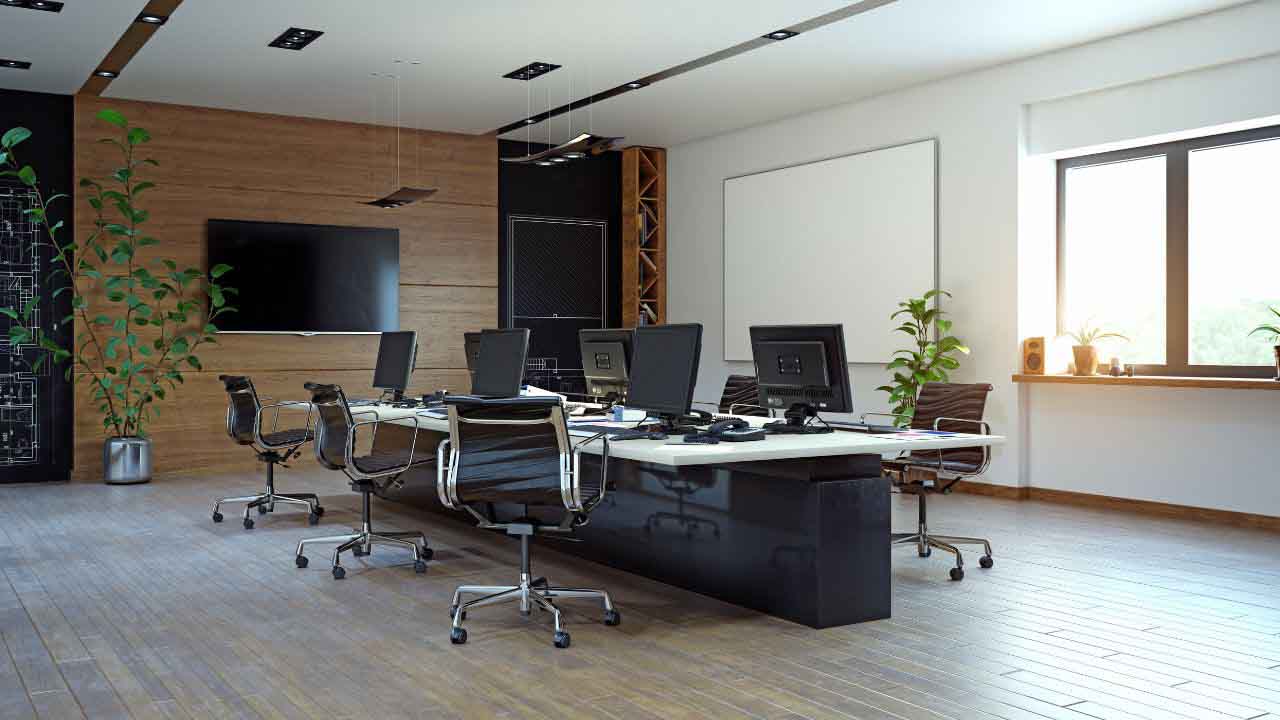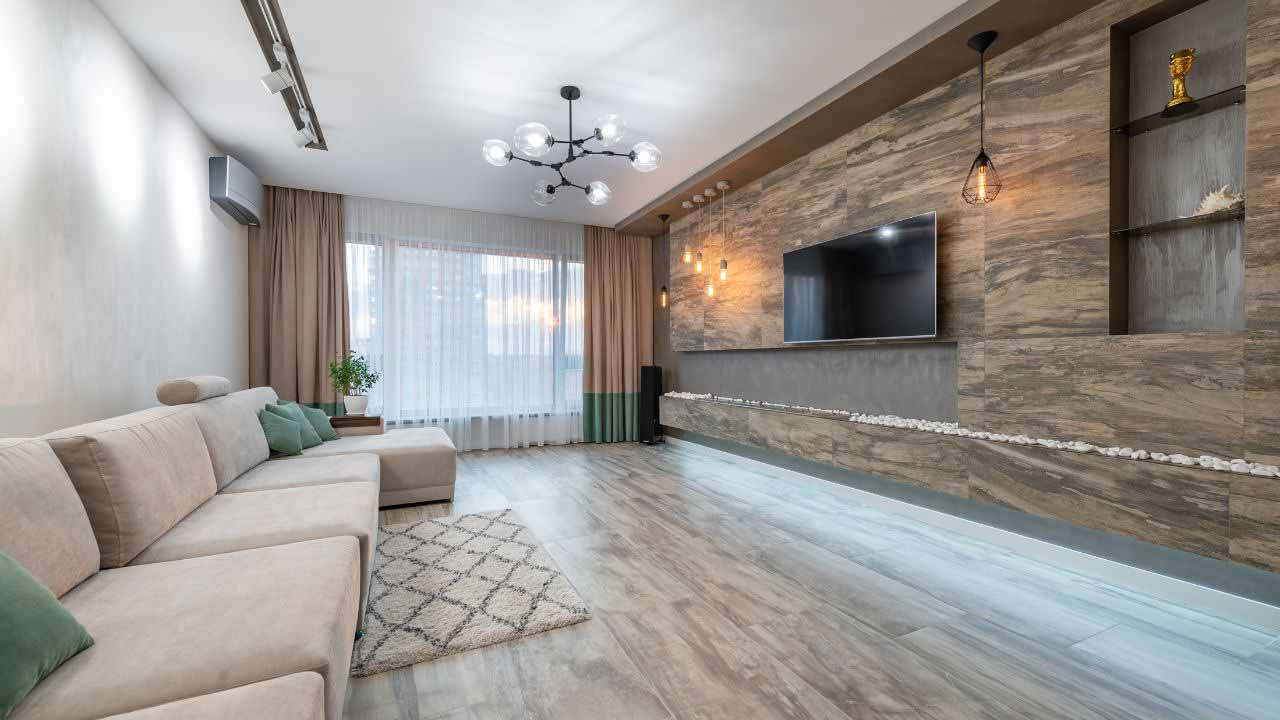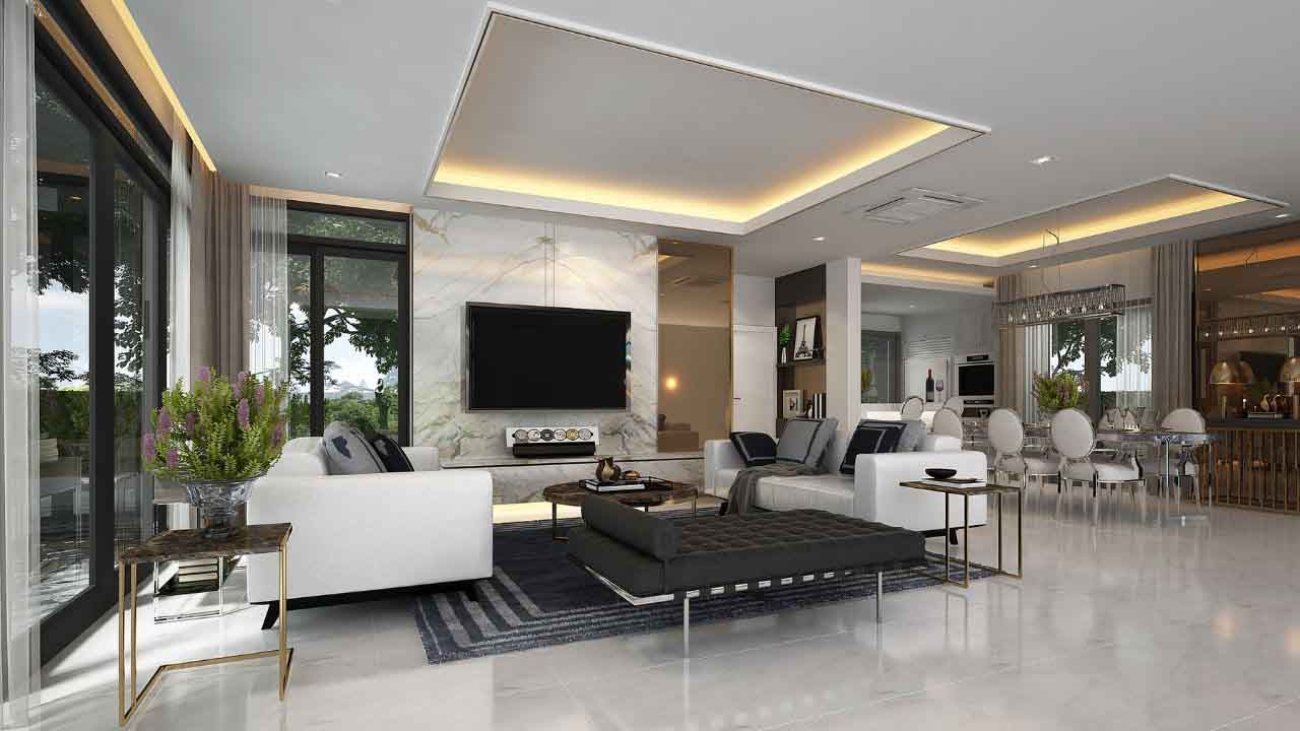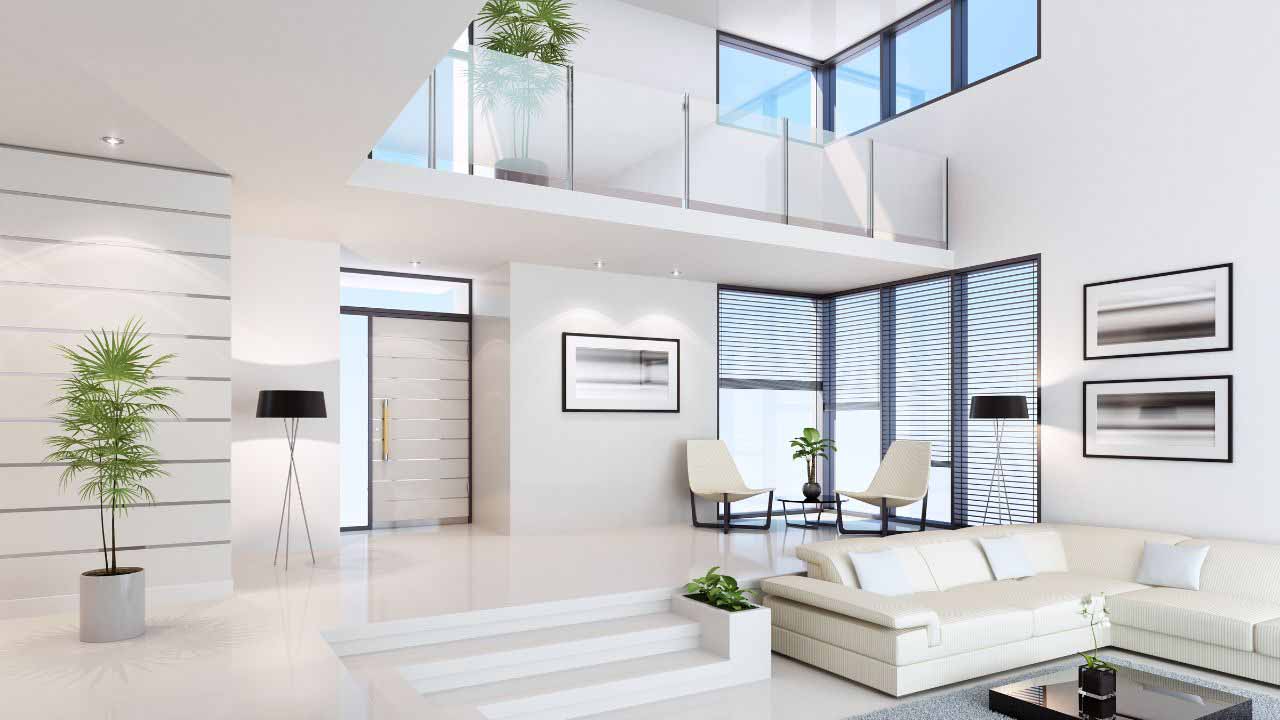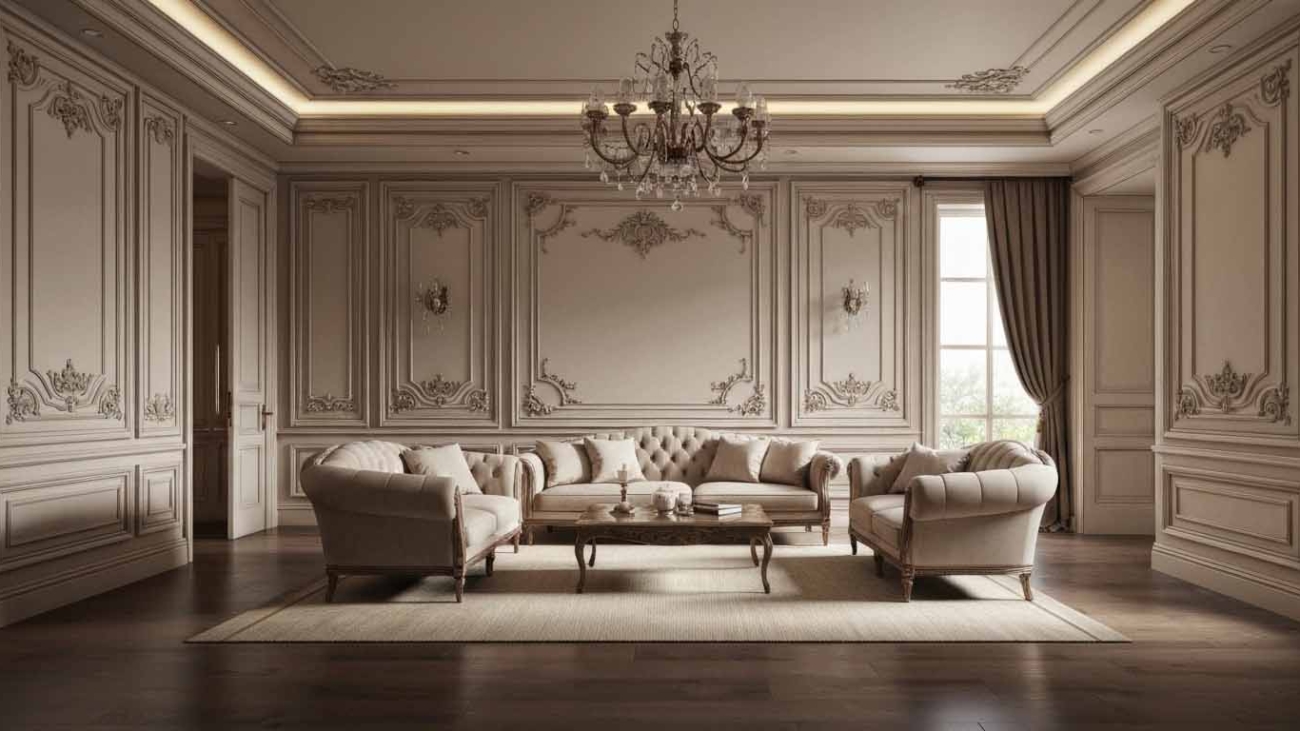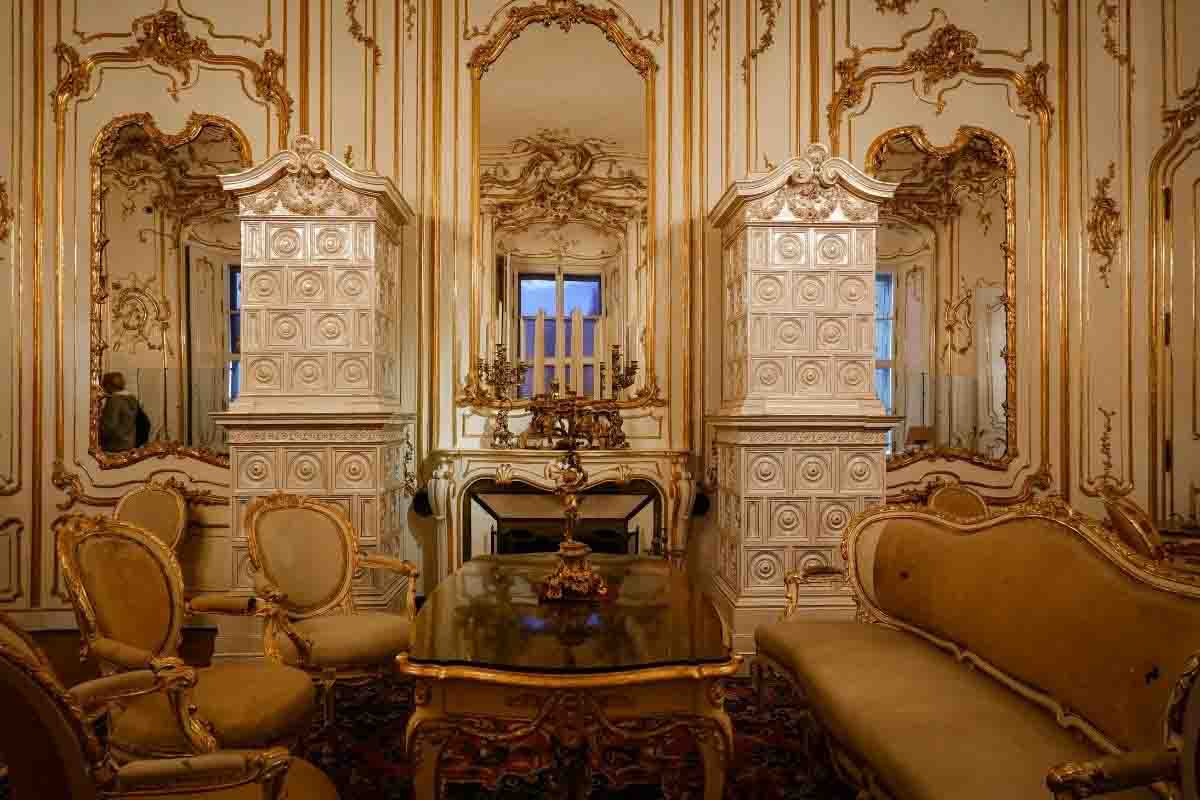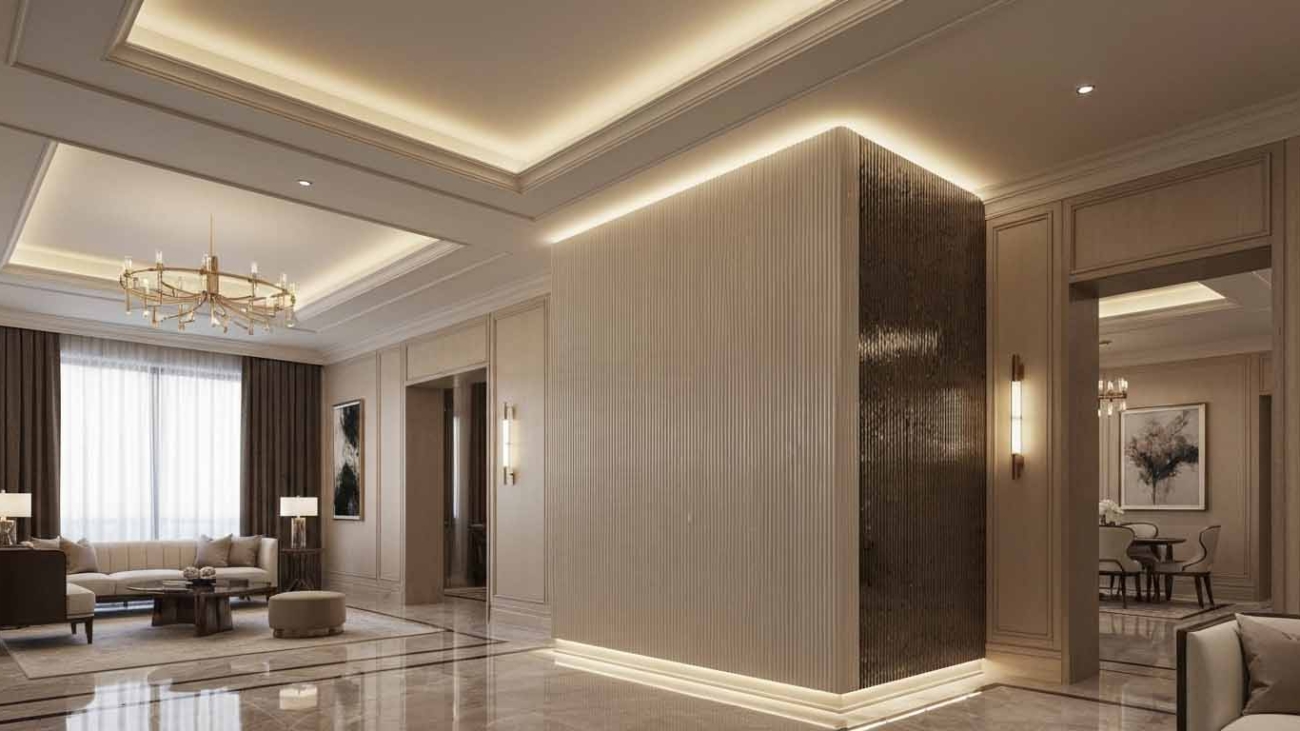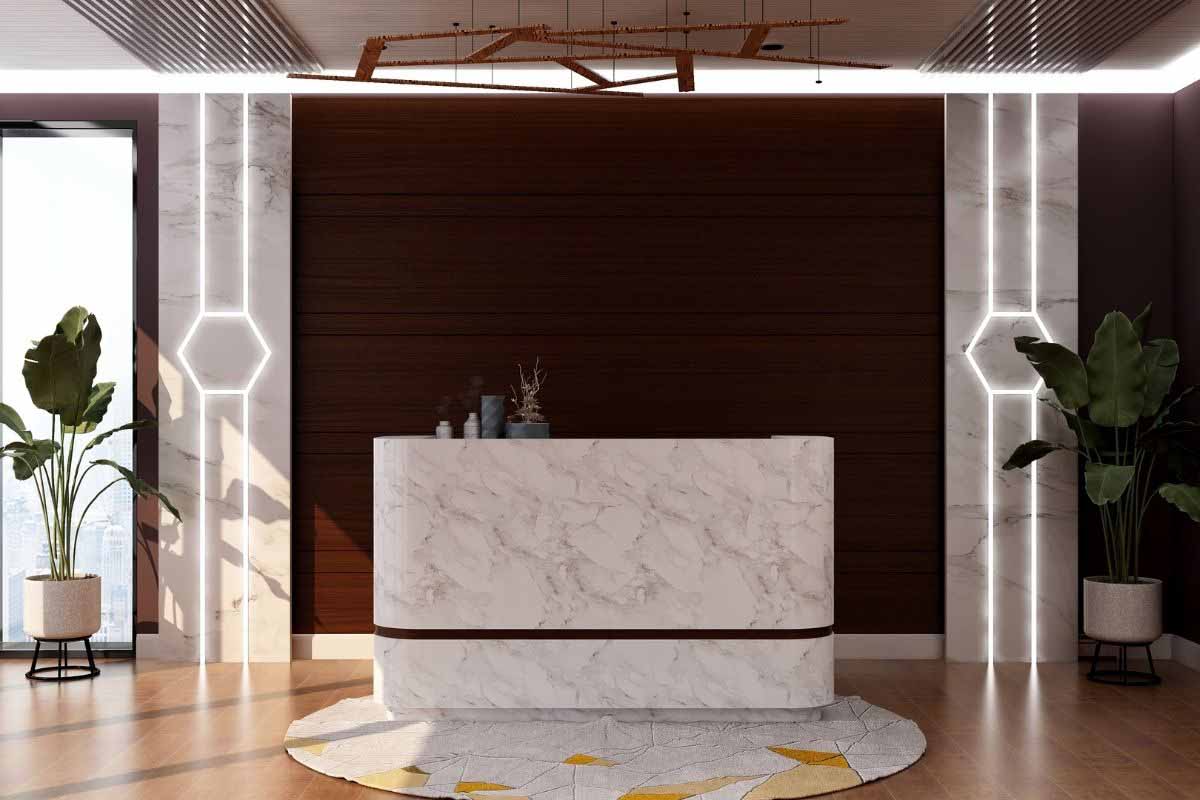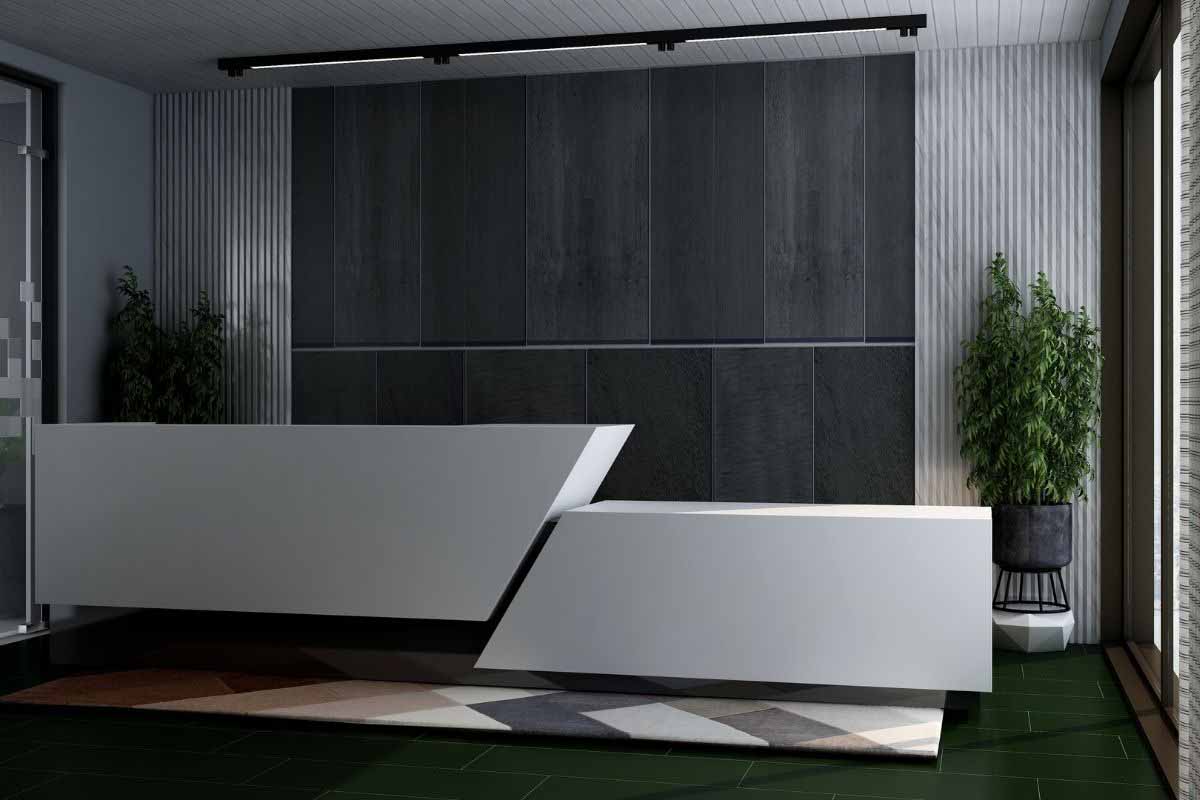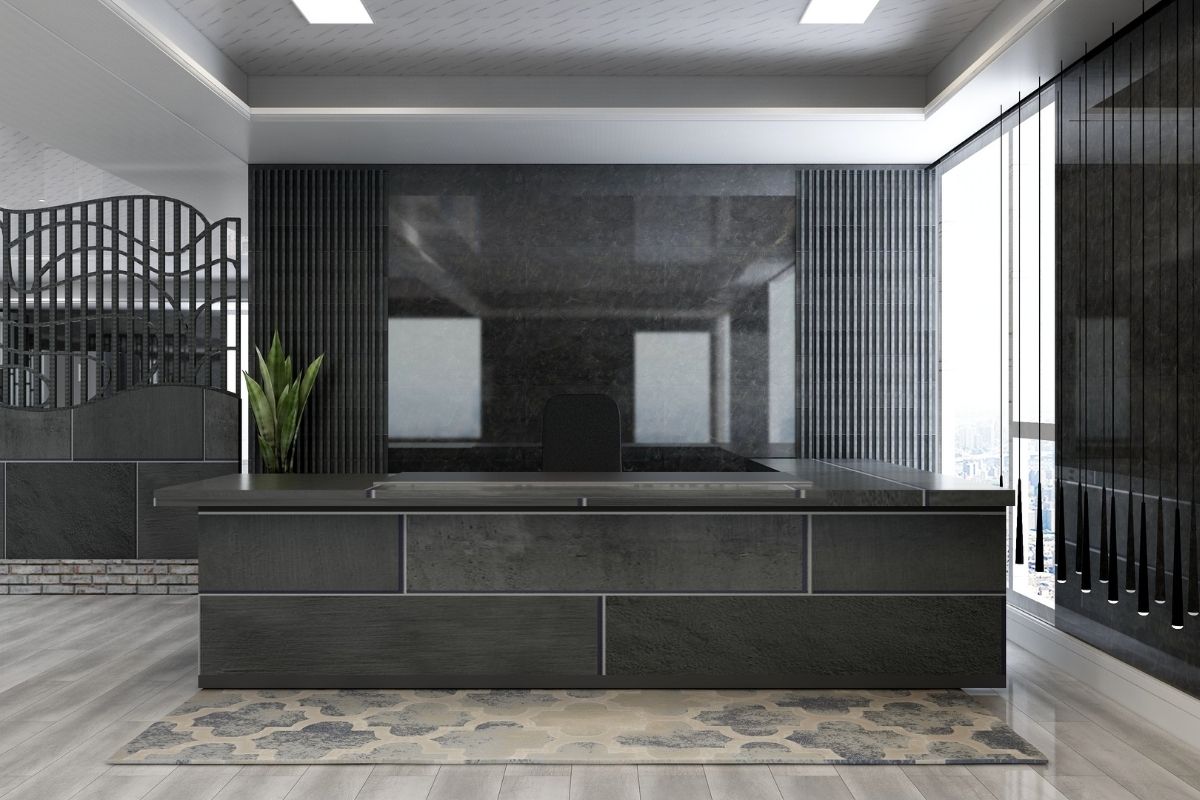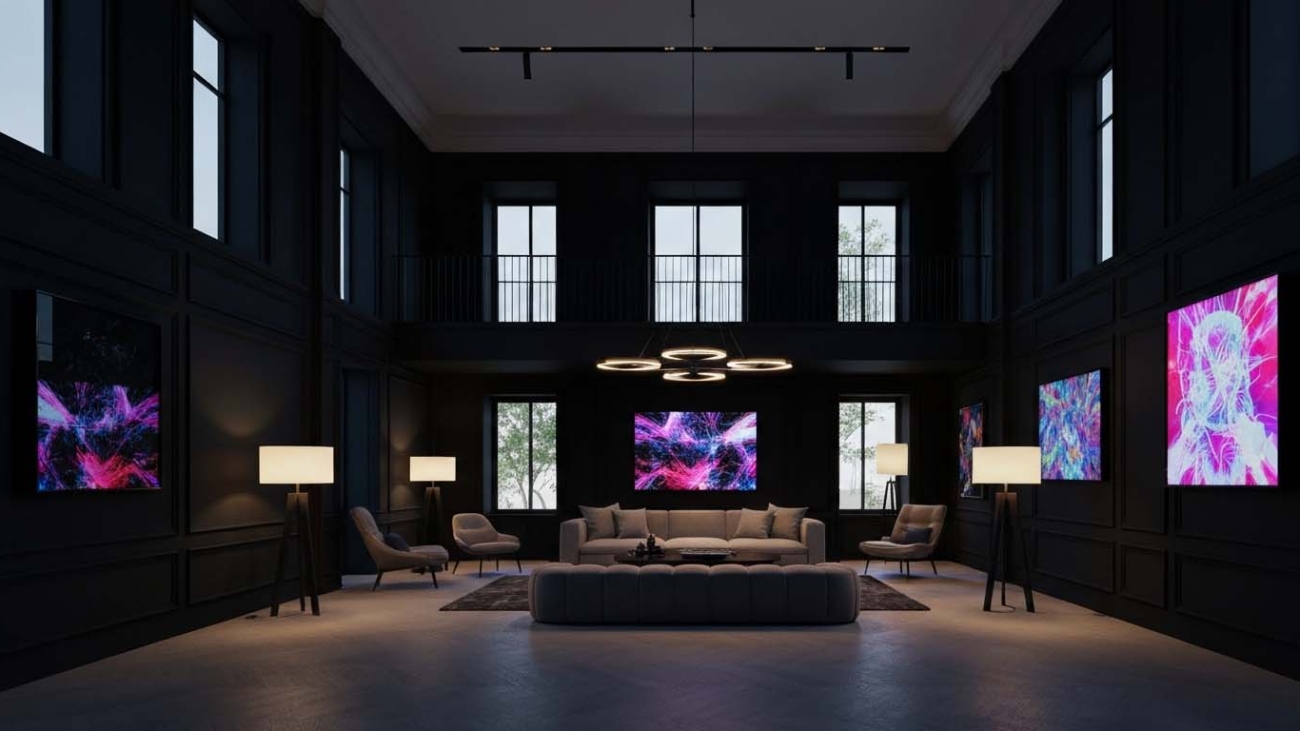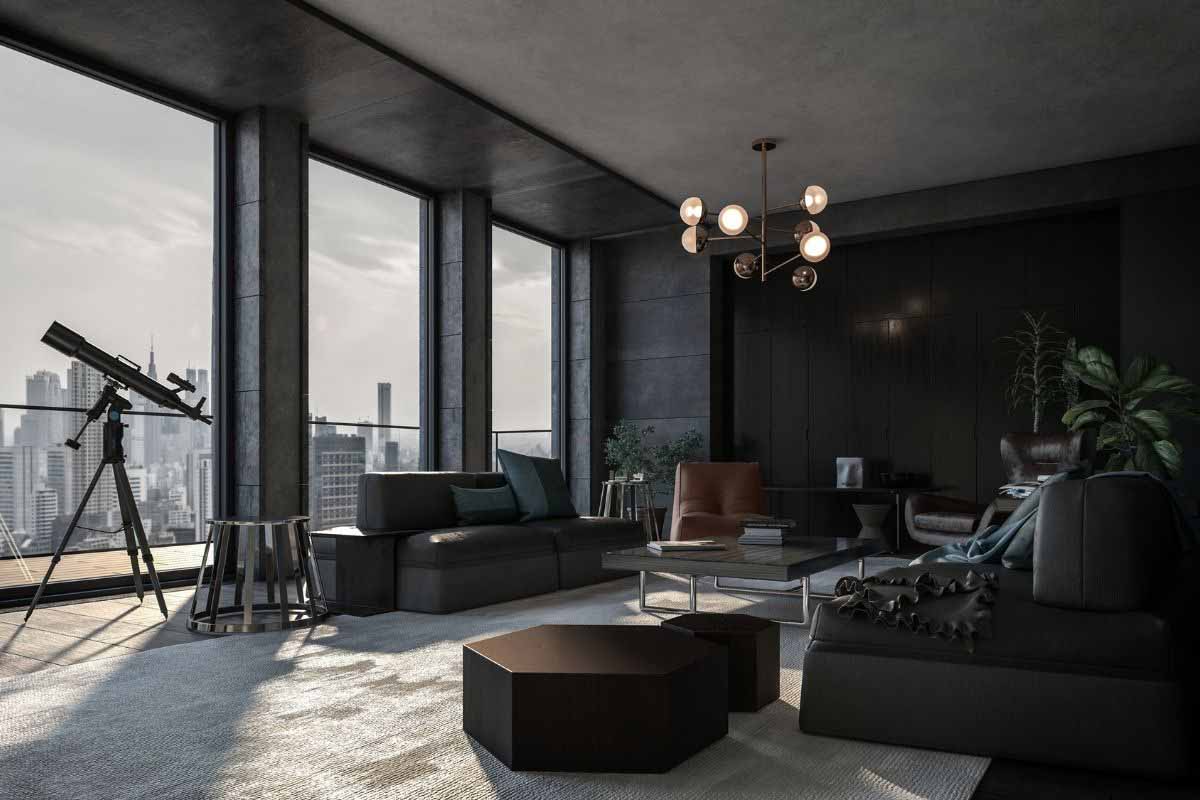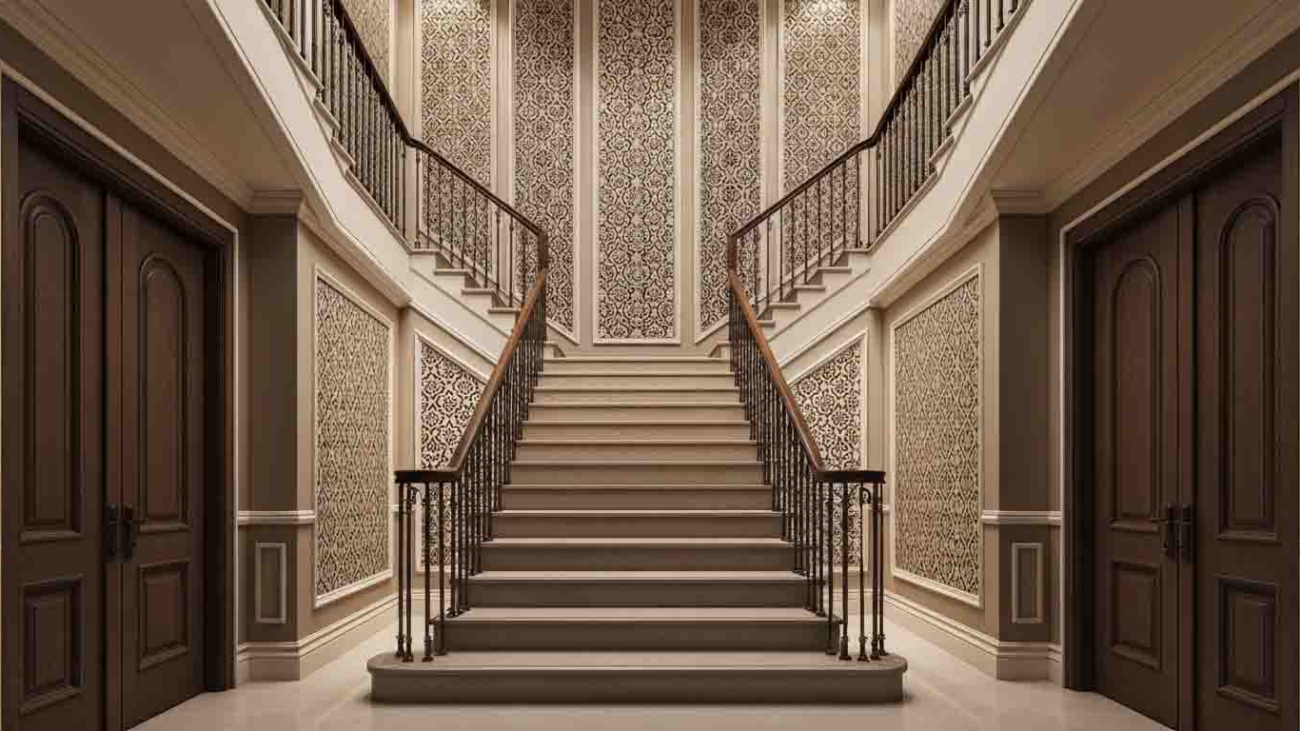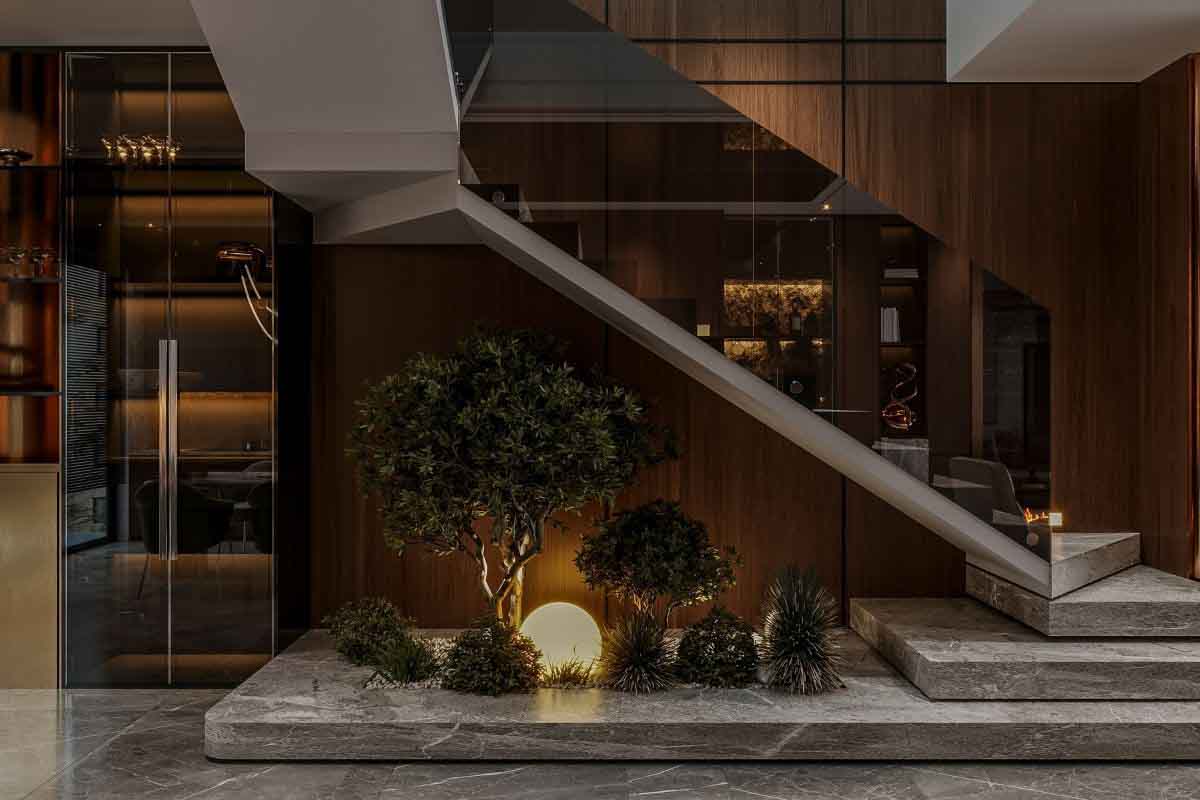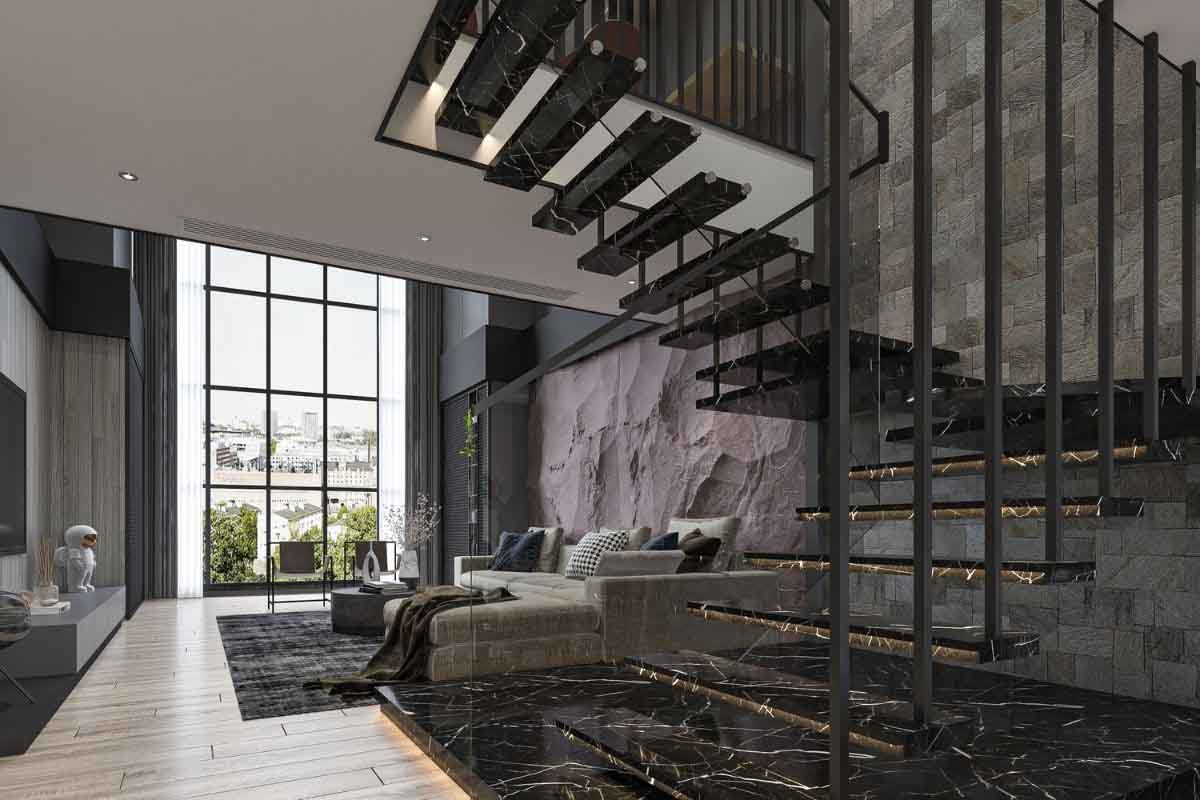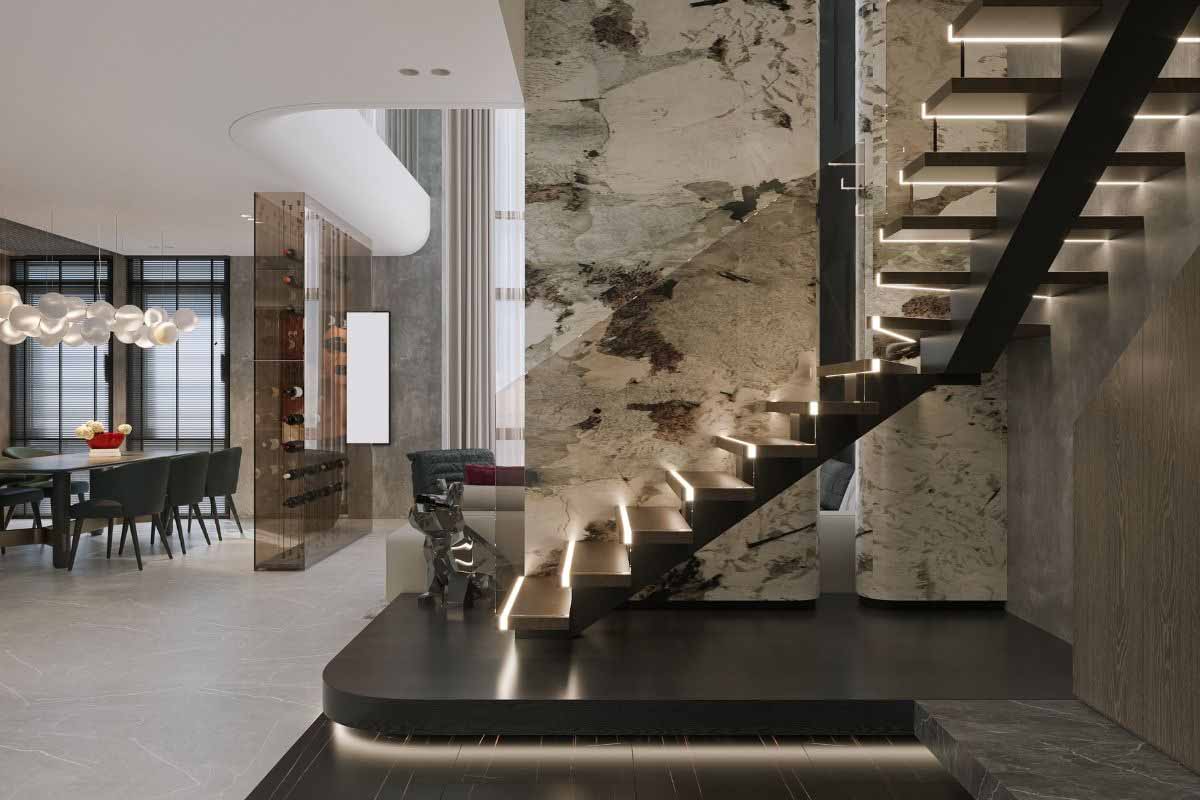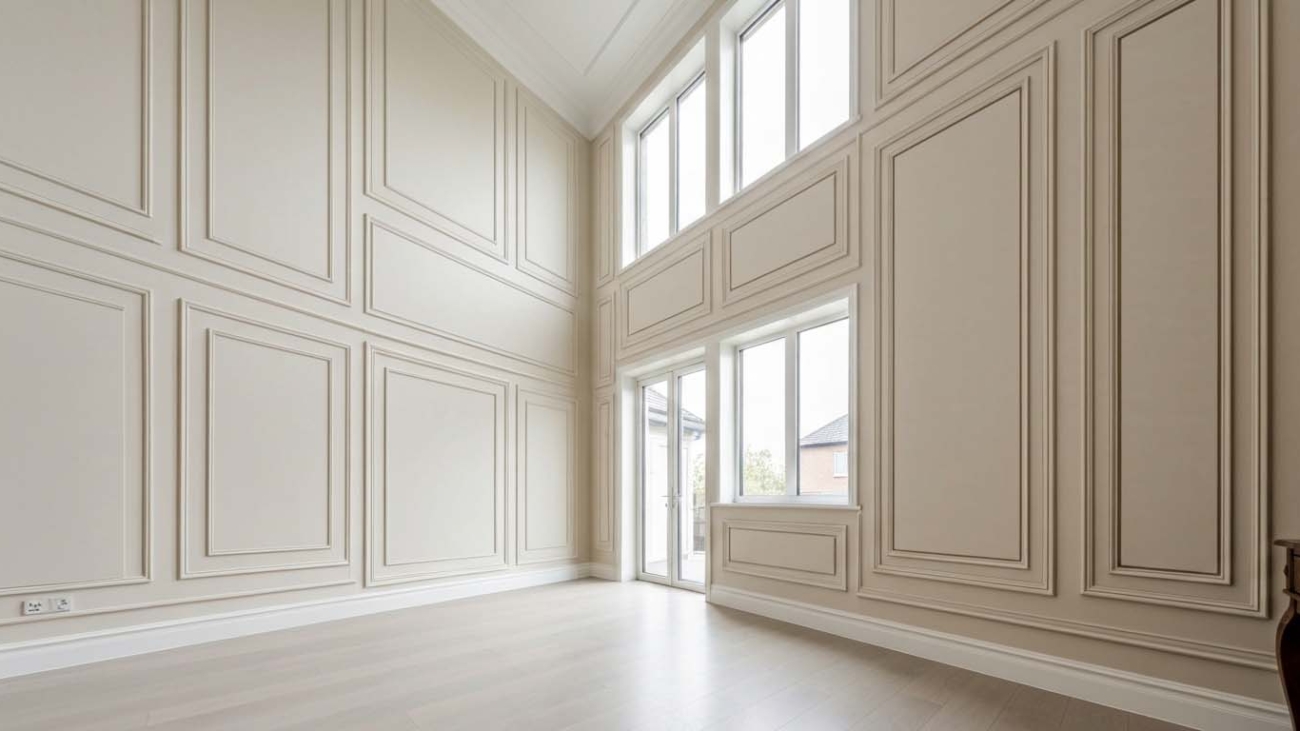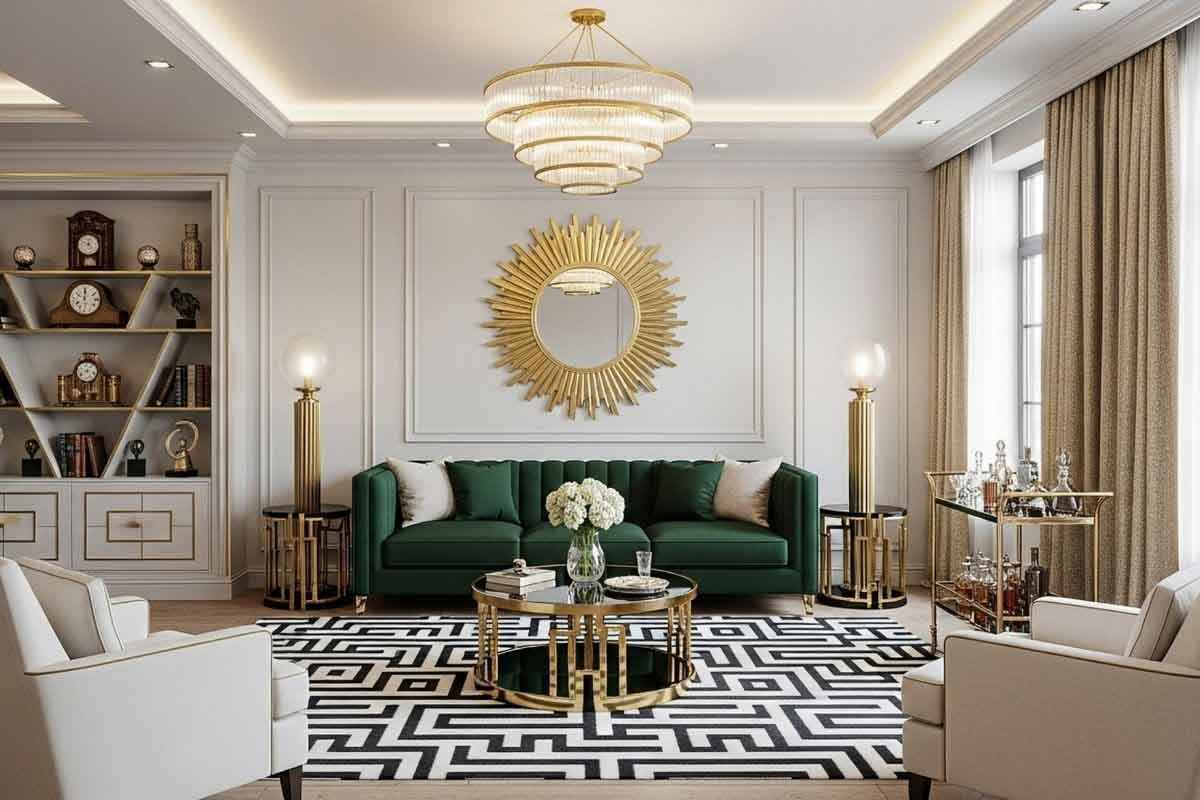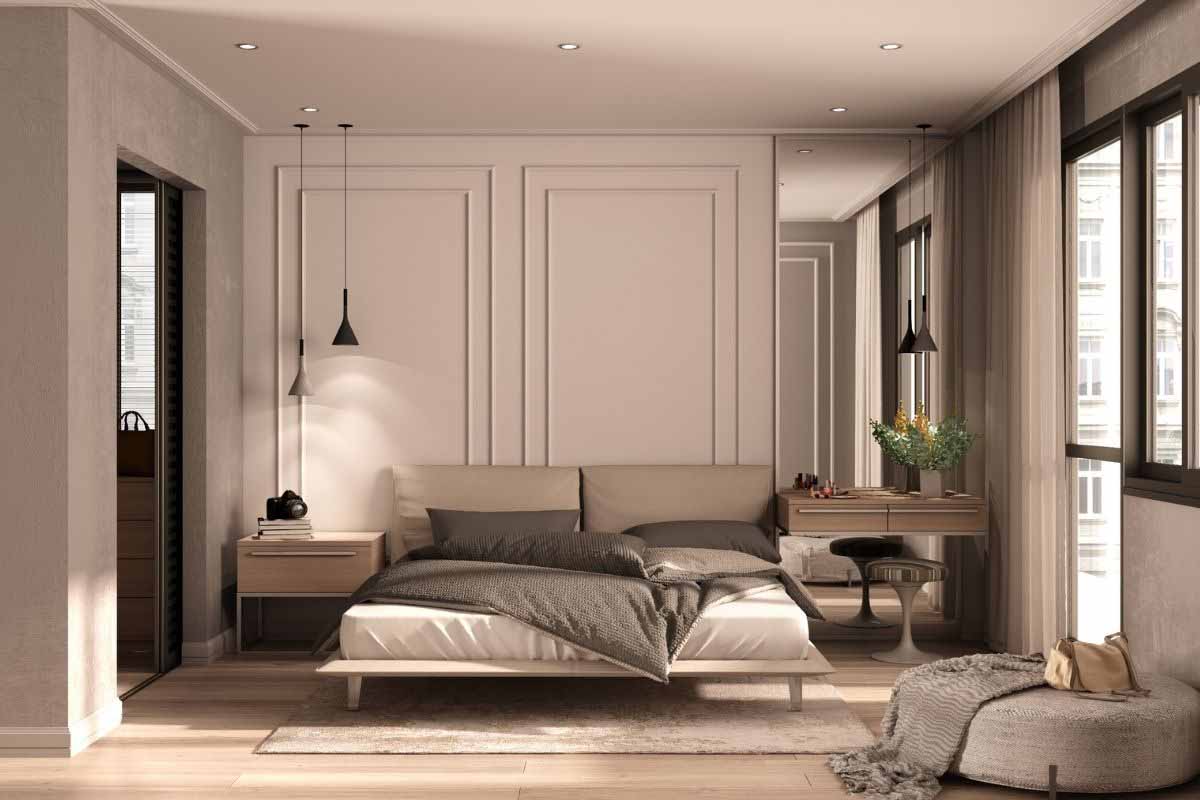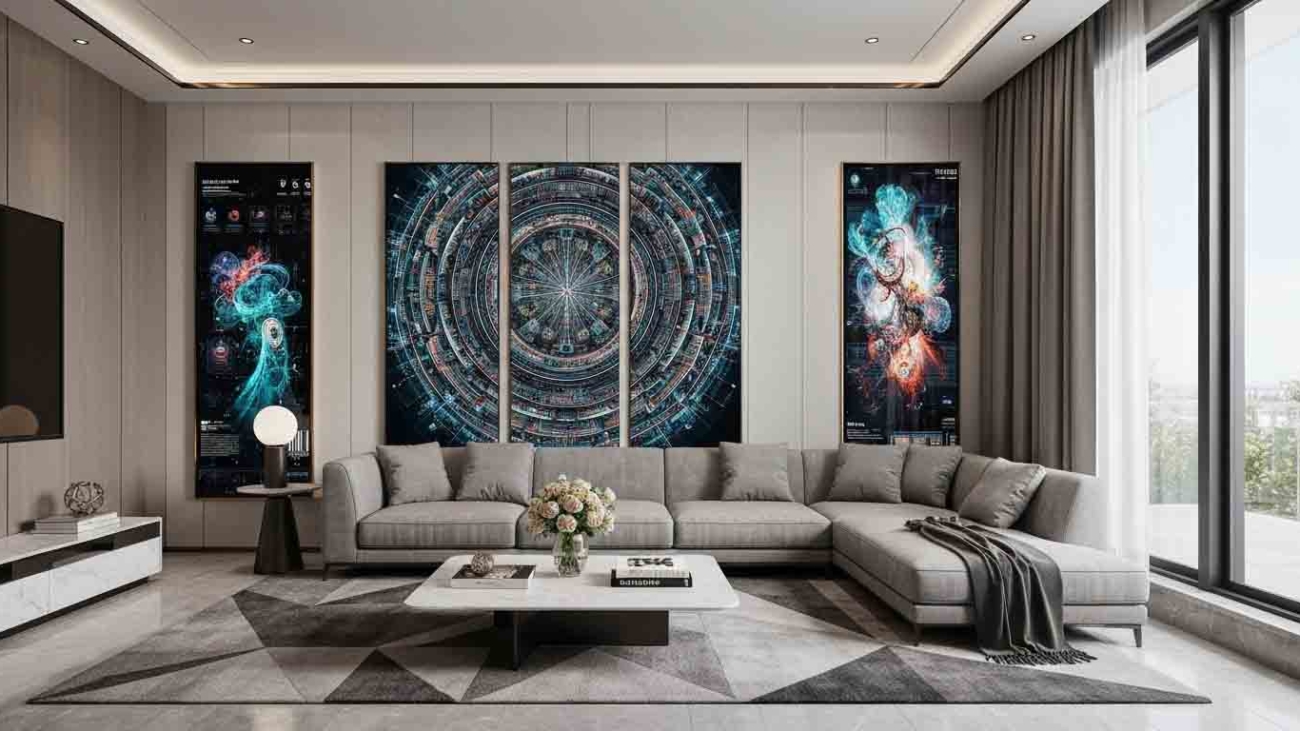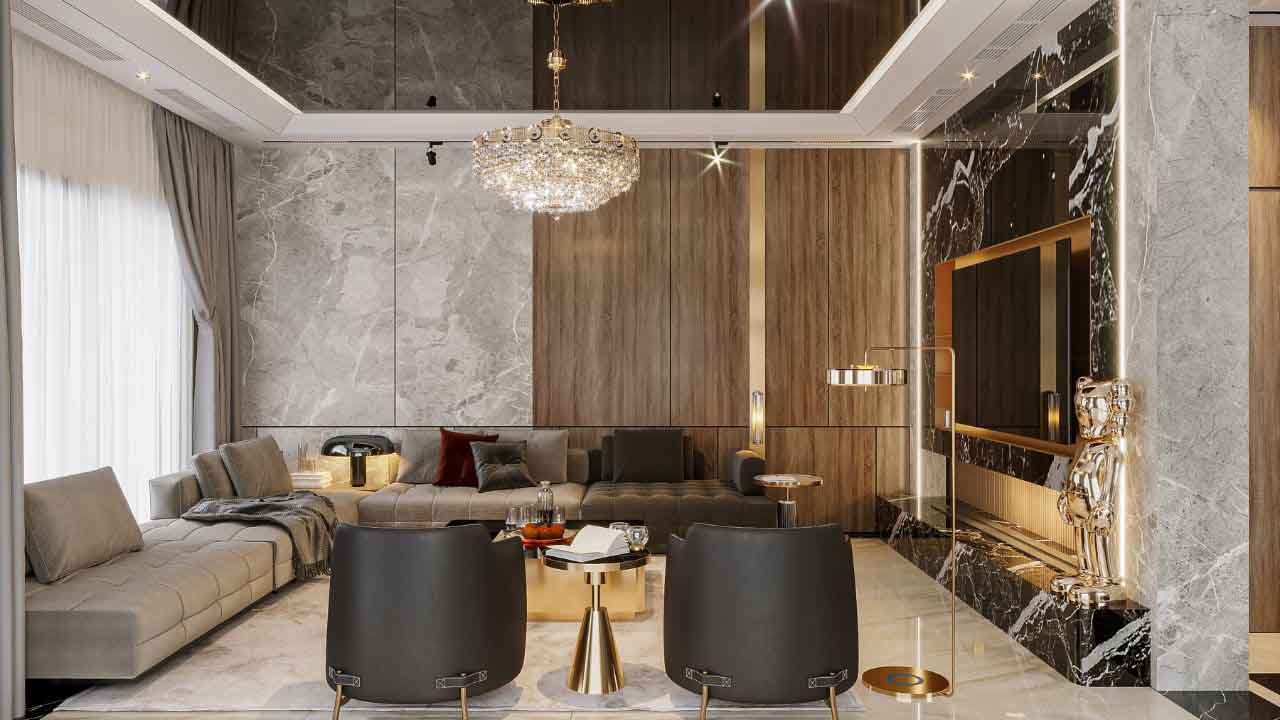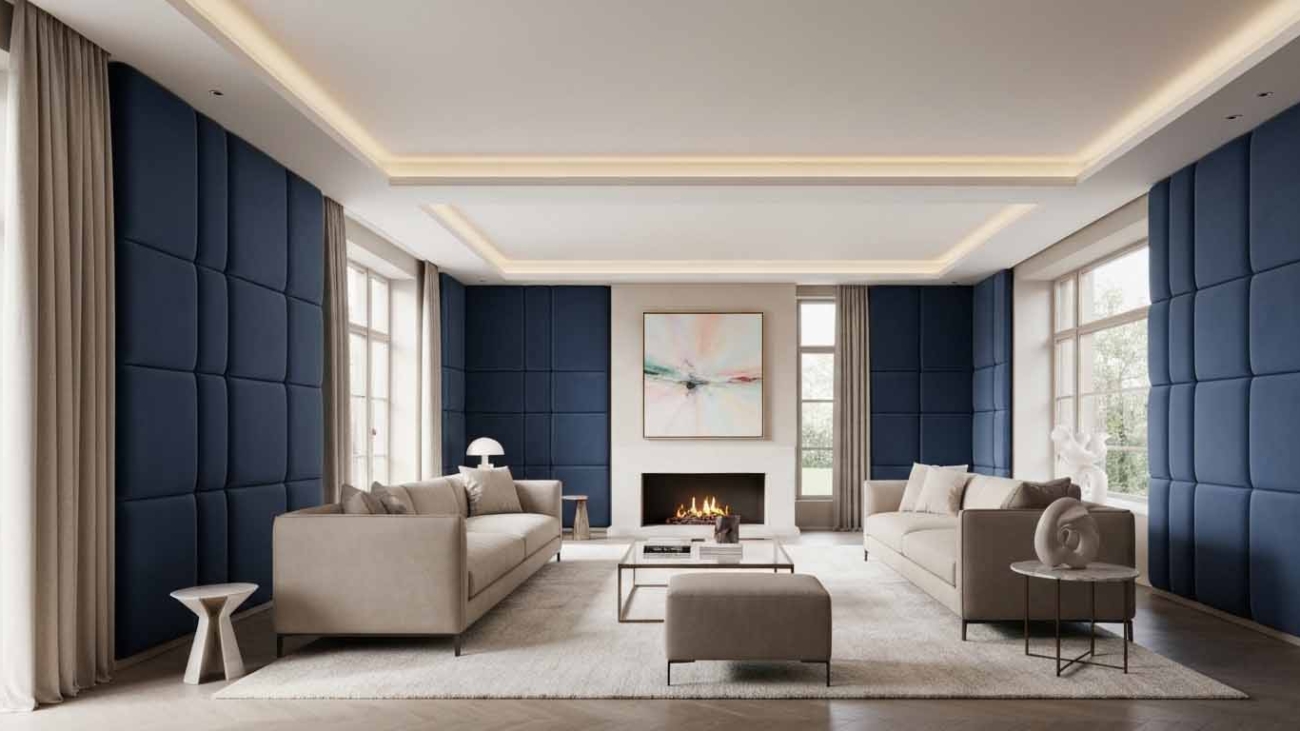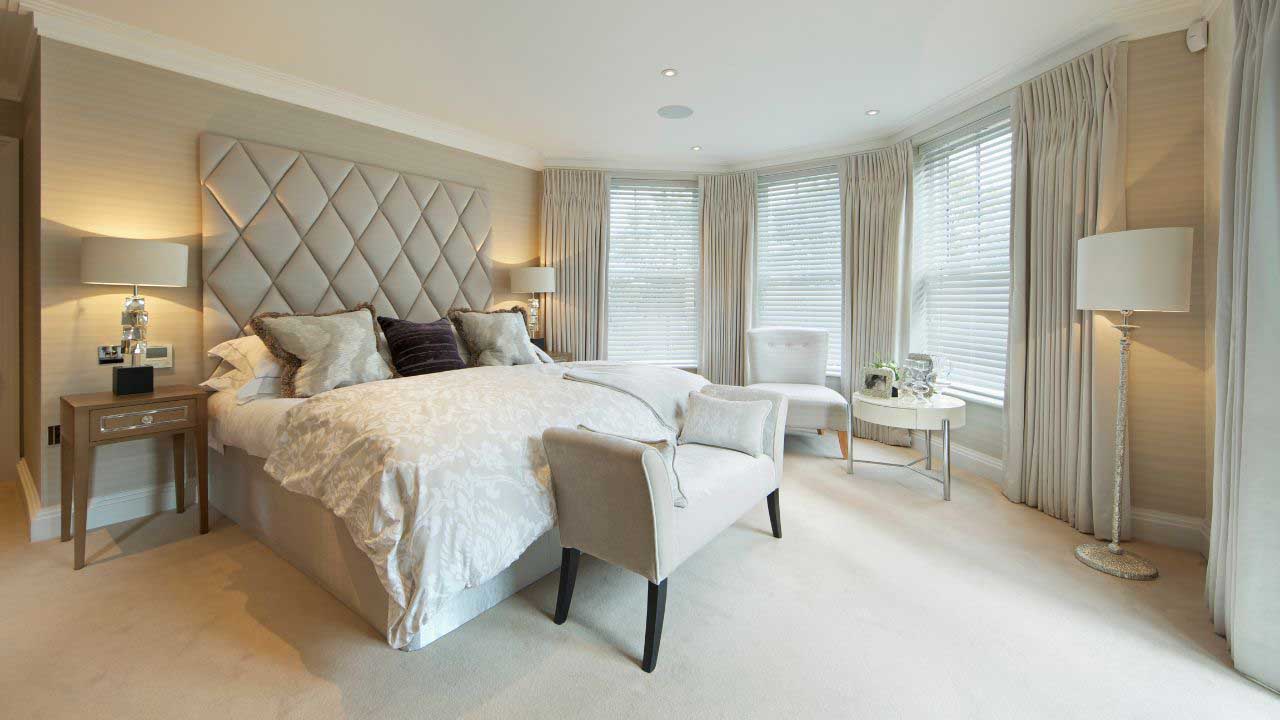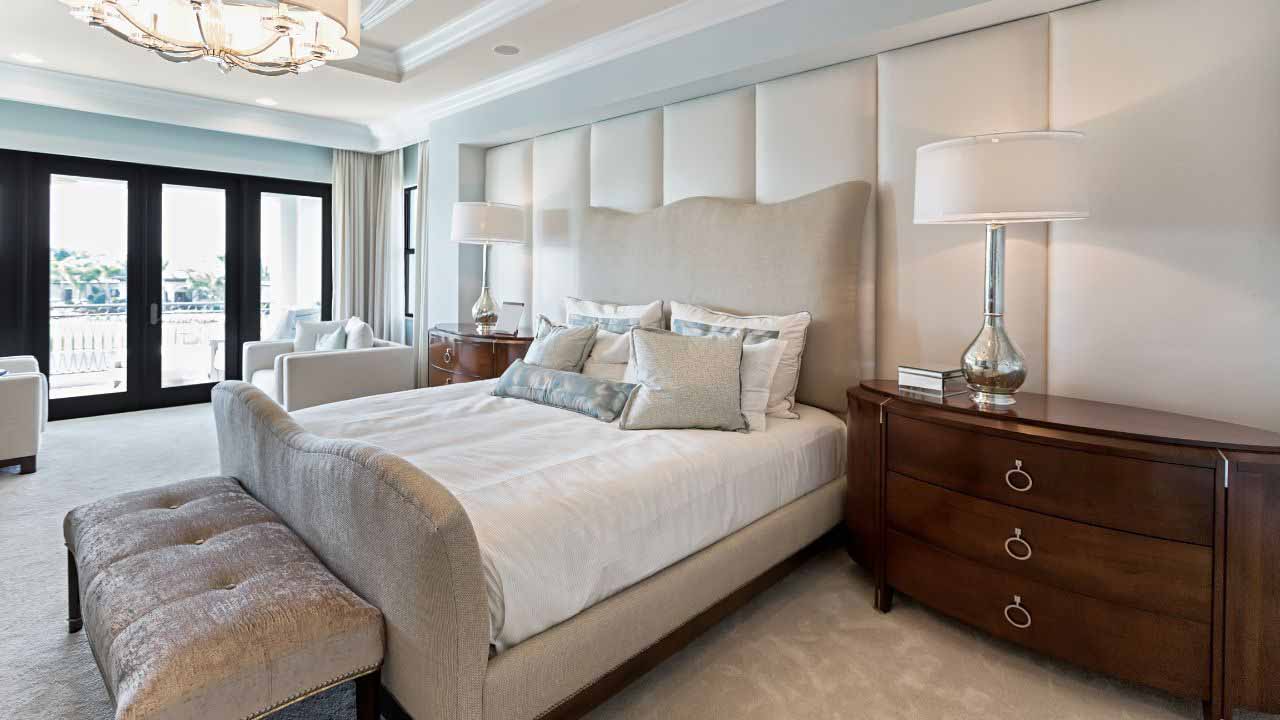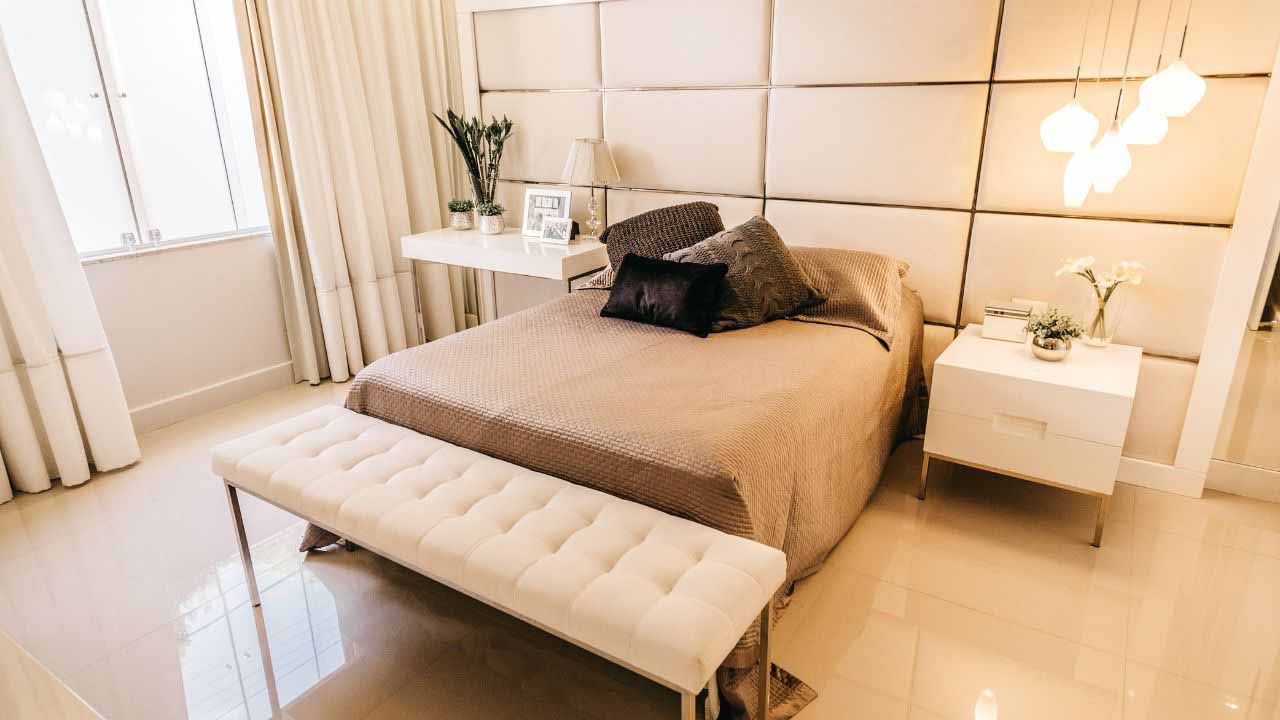Key Highlights
- Give your living room a fresh look with TV wall panels. These panels look good and can be a strong focal point in the room. If you use luxury wall panels, your space can feel high-end. They also help cover the cables and wires that come from your TV and other electronics. If you want to buy stylish TV wall panels online, many home decor shops and interior design stores have a lot for you to pick from. They can help you find one that will fit well with your space.
- A room can feel high-end with luxury wall panels because these hide cables and electronics.
- Try modern wall panelling if you want to give your room something extra. Wall panelling adds texture and depth, so your feature wall can really stand out. A DIY TV wall panel project is not hard when you plan well and use the right tools. Even if you are new, you can do it. Put in LED lighting with your TV wall panels for a better viewing experience. This step gives your space a feel as you get into a cinema. You can show your style on your feature wall by picking the panels’ material, color, and finish.
- Put LED lighting into your TV wall panels. This makes watching TV feel bold, almost like a movie in your own living room.
- You will have a lot of ways to make your feature wall your own. There are many different materials, colors, and finishes to choose from.
- Whatever your taste, there is something for you.
Introduction
Are you looking to change your TV wall from plain to something great? A blank wall behind your TV in your living space does not do much. If you give it a new look, the TV wall can stand out and help your entire room feel fresh. Wall panels are the perfect solution to make your TV area look nice and feel good.
At Panneli, we help you turn plain walls into good-looking spots in your home. We work with you from the start to the end. You get a living space that looks nice and fits your daily life. Let’s see how you can add that feel of luxury to your own living space.
You might ask: Can I put up TV wall panels by myself? Yes, you can. Many homeowners feel that the job is easy because today’s panel kits make things simple. If you have the right tools and read all the steps, you can get a good look at your tv area. The kits come with easy guides, and the wall panels are already cut to size. You do not need special skills or hard tools to put them up. You can make your TV wall feel new and nice just on your own.
Advice needed: Wood slat panels – TV wall or back wall?
When you think about where to put wood slat panels in your room, look at the TV wall. Ask yourself, is the TV the main focus in the area? If yes, it makes sense to use slat panels on the same wall as the TV. This will help make it stand out and look better. But, if you want more depth in the space, you can put the panels on the back wall instead. That way, you add balance and another layer to your room.
You can get a luxury wall panel look in your living room without much work. Just start with the wall behind your TV. Adding wall panels for your TV will give your living room a new feel. They add more texture, bring in some color, and style that you do not get with just paint.
To put a floating TV wall panel in your living room, first measure the wall where you want it. Mark the spot for your TV mount. After that, put a strong frame or brackets on the wall. Follow the steps in the panel’s instructions to attach it. When you are done, place your TV on the panel. Hide all the cables for a neat TV wall and a tidy look in your living room.
This change can be seen in many important ways. People now use good materials for TV walls, and they also make sure any mess is hidden from sight. TV wall panelling gives a complete way to meet different needs. All the parts go well together, and this builds a nice and modern media wall in your home. It’s not just about the old looks anymore. Today, LED wall panels are also becoming a part of home TV setups. These panels were used in offices before, but now they are found in nice homes as well. They show strong and clear pictures and can be made to fit media walls of any size.
1. Elevate Style with Modern Wall Panel Materials
The key to having a nice luxury feel is to pick the right material. You will see that modern wall panels for your TV come in many types. Some look just like real wood, shiny metal, or soft fabric. These finishes give a special feel to your wall design. A wall does not have to look plain or just be painted. A good wall panel can give your room depth and style.
If you use wall panels, you can make your wall design feel fresh and new with the right material for your TV space.
Think about how good wall panels with a wood grain finish feel. You might want something with a modern look, so you go for panels with a metallic feel. No matter what you pick, the right material can really change your space. The look of your wall panels makes a big difference to the room.
At Panneli, we offer collections that are perfect for a modern tv wall. You will find wall panels that look just like real wood, and some have metallic finishes. The top materials in our wall panels help your wall get both good looks and great durability. We use high-quality and sustainable materials. This way, your luxury wall panels will stay looking good, last for many years, and be easy to care for.
Choosing the right material for your TV wall is important. It can change how the entire room looks and feels. You might want it to feel cozy. Maybe you like a look that is clean and simple. Wall panels give you a lot of options. Their versatility helps you get the style you want for your TV wall and your entire room.
2. Conceal TV Wires and Clutter for a Seamless Finish
Messy wires can make a nice setup look bad fast. A high-end feel needs clean lines and no mess. This is where wall panels can help. They are made to keep all your cords out of sight. With these panels, your TV, soundbar, and gaming setup will look neat. They give a good cable management solution.
These wall panels create a small space between the panel and the drywall. You can use this space to run wires in a hidden way. It helps to keep the area around your TV units clean. You will not see messy wires. This makes it nicer to look at your tv. Some of the benefits are:
- Hide messy cables. This gives your setup a clean and smart look.
- Cover wall imperfections. These can be things like loose outlets or rough plaster.
- Create an organized and simple entertainment setup.
By putting up wall panels to hide wires, you help people focus on your nice wall design and what is on your screen. This way is easy and works well. You also get the feel of luxury wall panels without needing to put in much work.
3. Add Depth and Texture Using 3D TV Wall Paneling
A flat wall can be plain and may not give your room the feel you want. 3D TV wall panels add more depth and texture, so your wall can feel new and exciting. This kind of wall panelling uses grooves, slats, and shapes to create cool light and shadow effects. It helps your TV wall stand out and catch people’s attention. Wall panels like this give a good touch to any space. Try using TV wall panels to get this feel in your room.
This new texture makes the TV area feel special and more inviting. It can help improve your viewing experience because the wall looks nice and well-made. You get to pick what you like, such as the simple lines of fluted paneling or a bolder design. No matter what you choose, the wall around the TV will feel like a new piece of art. These panels add character to the space, but they do not take over the room.
You can use wall panels to make the decor in your room better. Try slat wall panels with lines that go up and down. This will help the ceiling look higher. If you want a strong feel in the room, pick a geometric pattern. Paneling like this does more than cover the wall behind your tv. It helps the television wall become a part of your room’s style.
4. Integrate LED Lighting for a Dramatic Display
Lighting matters a lot. It can change how a room feels. When you add LED lighting to wall panels around your television, the space looks brighter and better. Many people call this bias lighting. That means you put LED strips behind or on the edges of your wall panels. The light glows softly on the wall, giving it a nice feel and making the area stand out.
This ambient lighting is more than just something nice to look at. It can help your viewing experience, too. When you watch a bright screen in a dark room, your eyes can feel tired. The soft light in the room can stop that from happening. It also makes the colors on the screen stand out even more. You will see all the benefits for yourself.
- It helps the room feel like a movie spot.
- It lets you show the feel and look of your TV wall panels.
- It gives a soft light that you can change for different lighting conditions.
Big LED wall panels are often made for shops or offices. If you want a good upgrade at home, try using easy LED lights behind your TV. This is the perfect solution because you do not have to spend much money on it. With these LED lights, your TV wall looks new, and the TV area feels special. It will also make the TV wall design feel better. You get both style and better functionality, and it is not hard to set it up.
5. Customize Designs to Match High-End Interior Trends
Luxury is about making things feel your way. Your home should show your own style. The TV wall creates a strong impression. With wall panels you can switch out, you are not stuck with one look. You can choose or create a TV wall design that suits your decor. This is important for homeowners in places like Lakewood, NJ, who want something made just for them.
Before you choose a TV wall unit design, think about the style you have in your home now. At Panneli, you will see a wide variety of colors, shapes, and finishes. This way, you can make your TV wall feel right for you. It does not matter if you want a simple look, an industrial feel, or a classic style. Our team will help you make TV paneling that fits your space.
Picking the right wood grain or choosing a certain metallic look helps your TV wall stand out. A tv setup with these options feels neat and looks good. Little things matter when you want your room to feel special. That is how you get real aesthetic appeal. We work with you to make your idea real, so your new TV wall fits just right.
Choosing the Best Materials for Luxury Television Wall Panels
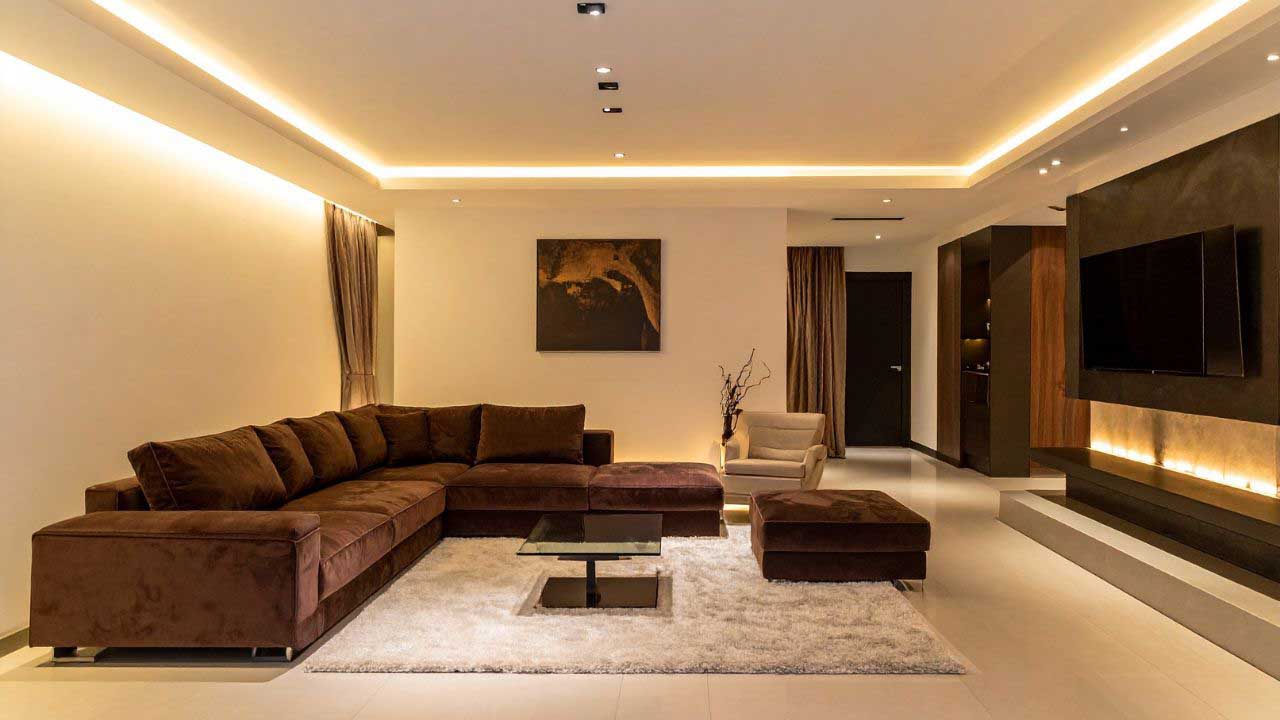
Picking the best materials for your wall panels is very important. When you pick the right one, your feature wall will look good and last a long time. The material you go with will change how the feature wall looks and feels. It will also help the wall be strong and durable. A lot of people like wood because it gives a warm feel. Some people want the modern feel that metal brings. Others go for stone-like finishes that feel like marble. These choices help your feature wall be special, stylish, and durable.
Each material gives a different feel and style to your TV wall. To choose the right one, it’s important to know about the good points of different types of wood, wall panels, and other finishes. This helps you make a good choice for your wall panelling project. Now, let’s look at some great choices for luxury TV wall panels.
6. Wood Panels: Warmth and Sophistication
Wood panels are a great way to make your room feel warm and nice. They bring in the feel of natural beauty and comfort. Each wood panel has its own wood grain, so no two walls look the same. Wood panels also help your decor feel fresh and real.
Wood panels are a good way to make your TV wall stand out. They add texture and feel rich, which goes well with the smooth TV and gives a modern look. At Panneli, you get wood panels made from earth-friendly materials. Our wood-effect panels show off many types of wood and give you their style without needing the care that real wood needs. This way, you get a good-looking TV wall, enjoy a modern look, and also help with sustainability.
Our collections have several choices for you. You can get deep and rich colors. We also offer light and airy finishes to fit what you want.
Panneli Collection | Aesthetic and Feel | Best For |
From The Orchard | Features natural wood grain patterns for a warm, organic look. | Creating a cozy, inviting living room or bedroom. |
From The Forge | Offers sleek metallic finishes for a modern, industrial vibe. | Contemporary spaces need a sharp, sophisticated edge. |
From The Tannery | Provides the rich texture of leather and fabric for ultimate luxury. | Creating a unique, high-end statement wall. |
7. Metal and Glass Finishes for Contemporary Spaces
If you want your TV area to have a modern look, metal and glass-effect wall panels are good for that. The panels can make the room feel clean and new. They suit a simple or factory feel in your home. Some metal wall panels, like what you get in the “From The Forge” collection, will make your TV area stand out and look cool.
These finishes bounce light around the room. This makes a small space feel brighter and bigger. A high-gloss slab panel can look a lot like back-painted glass. It gives a smooth and modern feel behind your television. This neat look is one of the best ways to get that luxury wall panel feel. Wall panels like these can make any room feel good.
You can use wood or textured panels with these materials to make the wall panels look better. Think about a shiny, smooth panel. When you put it with warm wood slats, the whole space feels fresh and nice. This mix gives more interest and a modern feel. It is one of the best ways to add contrast and style to your new wall panels.
Design Ideas for TV Wall Paneling in Lakewood, NJ Luxury Homes
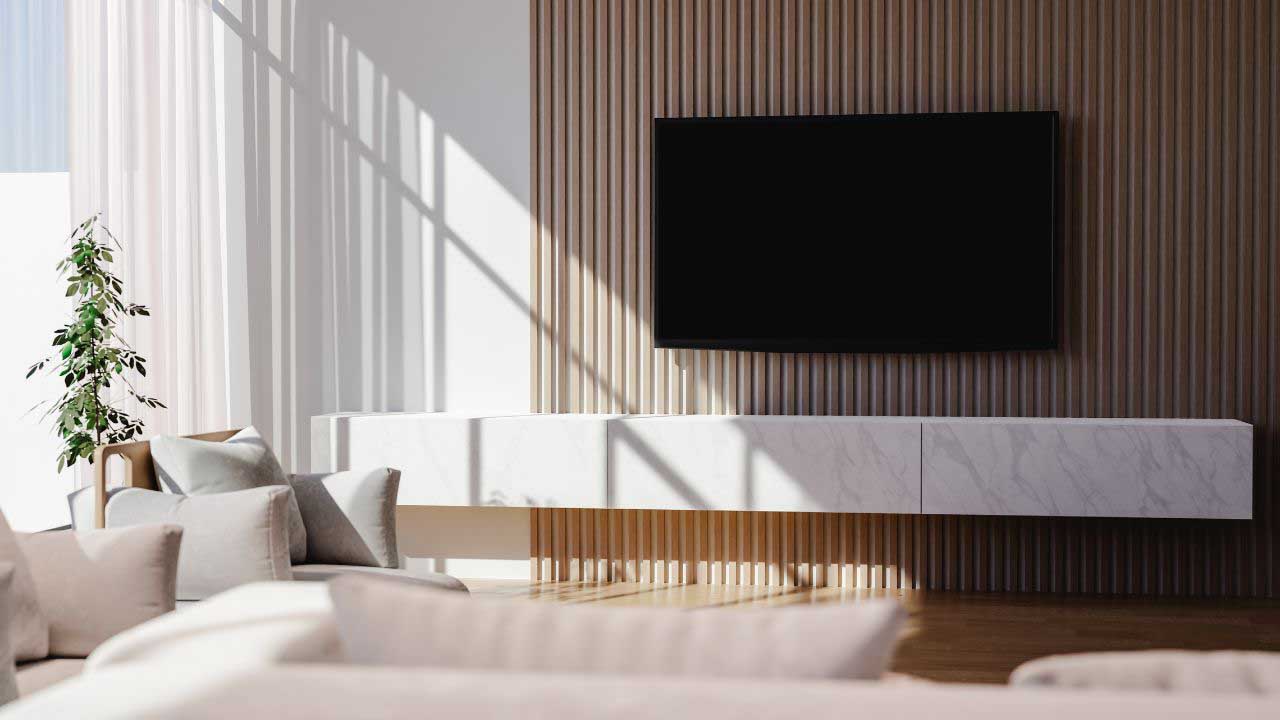
In Lakewood, NJ, the TV wall in a luxury home is more than a place to put your TV. It also shows off your style and can be a big part of how your room looks. A lot of homeowners, people who design, and architects look for wall design ideas that are good to look at and are useful. You can use these in your living room, bedroom, or home office. A good TV wall paneling can change the feel and look of a space. It will give you both style and functionality.
Panneli does well when it comes to making special solutions for big projects. We know how important it is to have a design that is different and always looks good. Here are some of the best design ideas we give to our clients in the Lakewood area.
8. Floating TV Walls with Hidden Storage
A floating TV wall shows both modern and simple styles. You put the TV wall panels in a way that makes them look like they float. This makes the room feel light. The TV wall gives you storage space that stays out of sight. This keeps the room neat. The TV wall looks good and is useful too. It is a smart way to use wall panels for your TV and extra storage space.
Setting up a floating TV wall panel is something that needs planning. While some homeowners may want to do this on their own, we think it’s best to get expert help. A pro can be sure your TV wall is safe and looks right. At Panneli, our team does it all. We can help with the design, the TV wall setup, and hiding any cables the right way. This is a good choice for those who want their living room to feel high-end with no extra trouble.
The benefits of this design are significant:
- It gives the room a clean look, and the feel is smooth. This helps modern decor stand out and look good.
- The area below makes it easy to do a fast cleanup.
- It has storage built in that hides things. This is a compact way to keep your stuff.
9. Statement Walls for Living Rooms and Entertainment Areas
Why have the TV wall plain when you can make it pop? Turn it into a feature wall to catch the eye of everyone. Try bold textures or choose strong colors. You can also use big wall panels with the TV. A TV wall like this is the main focal point in the room. It is like having artwork on your wall. This idea works well for big living rooms. Make it the highlight in a space meant for entertainment so your guests will see it first.
Try a panel with a deep wood grain, a bold stone look, or a 3D touch. If you see the wall as one big space, your TV can blend better with your decor. This helps the TV feel like it is part of a larger design instead of just sitting there as a screen. It is a good way to make your room feel fresh and bring everything together.
At Panneli, we help homeowners and designers in Lakewood, NJ, make beautiful feature walls. We offer wall panels in custom sizes and many finishes. This means you can have a wall that really stands out. Your television wall panels will show your style and become the main focus in your home.
Conclusion
In the end, TV wall panels do more than look nice. They bring style and add a feel of luxury to your living space. These wall panels can hide mess, give a fresh look, and help any room feel special. Homeowners in Lakewood, NJ, can pick the look that feels right for them. This way, your living space will show off your taste and stay in step with the latest trends. When you use top materials, your TV wall will look better and last for years. With all these features, the room will stand out and tell people a lot about you and your home. So, if you want TV wall paneling that gives your living space something new and rich, get quotes now and start your new look.
Frequently Asked Questions
10. What are the benefits of using decorative television wall panels?
Decorative wall panels can change the look of your living room. They can cover up the clutter you have and add some texture to the wall. When you use this kind of panelling, it works as a feature wall that shows off your decor. You get a nice focal point in the room. This will make the whole living room feel more neat, stylish, and put-together.
11. Can I install luxury TV wall paneling myself?
Some homeowners who like to do things on their own might want to try setting up TV wall panelling at home. But if you want a luxury look for your TV wall, it is a good idea to get help from someone with skills. A smooth finish against the drywall takes practice and real skill. At Panneli, we offer complete installation services for your TV wall panelling. Our team makes sure you get top results for your TV wall in your home.
12. How do wall panels hide wires behind my TV?
Wall panels are put on the wall with a small gap behind them. This gap is a great place for cable management. You can hide wires from your tv and other things in this space. This will make your setup look very clean and neat.



